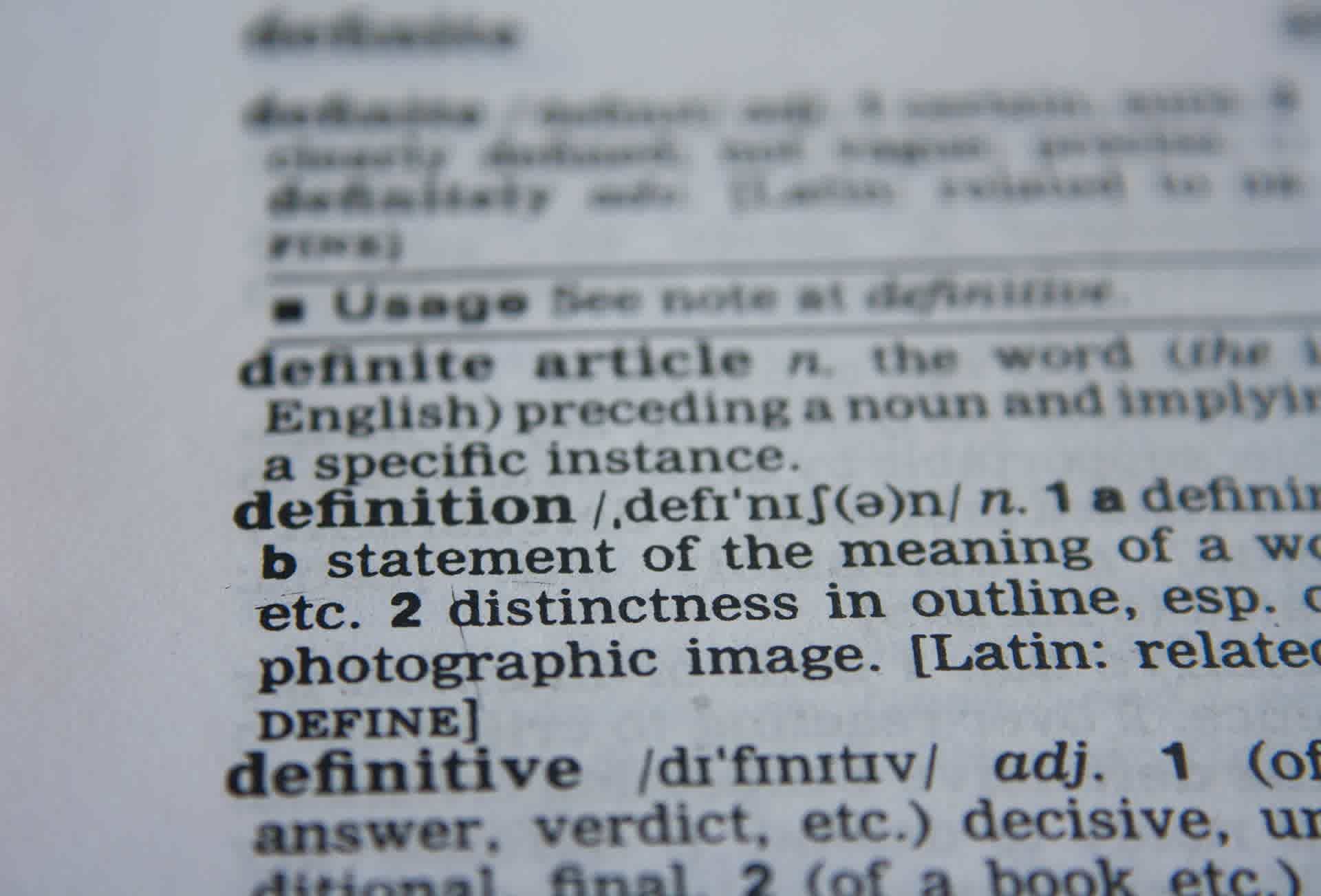So why do you need a definitive digital workplace definition anyway?
According to a tweet by the Digital Workplace Group, digital literacy is the digital workplace word of 2019 – and for very good reason.

Raising the digital IQ of your organization is arguably one of the most important things you can do to transform your digital workplace and improve the employee experience. It’s especially critical when you consider this statement by Marc Solow, director of HR shared services at Deloitte:
"Digitization has become essential for innovation and for keeping employees engaged in their organizational mission and careers."
And yet according to Gartner, fewer than 20% of employers are prepared to adopt digital workplace technologies.
That’s a big disconnect and an even bigger problem -- one you should avoid at all costs. So let’s get started -- here are the 3 terms you need to understand to improve your employee experience (plus that digital workplace definition I promised you!):
1. Digital Workplace
It isn’t so much that the term digital workplace is hard to define but that everyone comes at it from a slightly different perspective (an issue that plagues all the “definitions” floating around the industry right now unfortunately).
Technology marketing firm TechTarget asserts that the digital workplace is meant to “align technology, employees and business processes to improve operational efficiency and meet organizational goals.” Hewlett Packard Enterprise, on the other hand, claims that the digital workplace “quickly and securely provides personalized role-based services, and all the applications, data, and collaboration an employee needs on any device, anytime, anywhere through a consumer-like online experience.” ClearBox Consulting’s Sam Marshall takes that definition even deeper and contends that the “Digital workplaces include many elements, such as communication, collaboration, finding and sharing, business applications, employee services and support for agile working.” Deloitte, meanwhile, comes at it from an entirely different angle, saying that the digital workplace “breaks down communication barriers, positioning you to transform the employee experience by fostering efficiency, innovation and growth.”
All of these are completely valid interpretations, but because they each focus on different, uniquely important aspects of what a digital workplace is and should be, it’s hard to know which you should focus on for your organization’s vision.

The digital workplace is about much more than just laptops.
Wonder no more – here’s your definitive digital workplace definition (along with some bonus trends, if you’re interested), compiled from all of the great definitions currently floating around the web:
The digital workplace is the natural, ongoing evolution of the physical workplace. It includes all devices, software and platforms that workers use to complete their jobs and is comprised of such technology as core enterprise applications, communication and collaboration platforms and enterprise social media and virtual meeting tools.
The ideal digital workplace meets several important criteria. It should:
Be more than just a portal into a collection of individual systems
Be seamlessly connected so that its intuitive for employees to navigate, reducing their cognitive load and giving them more time to focus on their high-value work
Make it easier for employees to find the information they need, modeling the simplicity of the consumer experiences employees have become accustomed to
Deliver personalized, contextual information that stands out from the information overload employees typically experience
Be intelligent, adapting to the way people work to increase employee engagement and satisfaction.
Eliminate communication barriers, enabling organizations to transform the employee experience by fostering efficiency, innovation and growth.
That might sound like a lot, but the importance of an effective digital workplace cannot be overstated.
But why? Why is it so important to get the digital workplace right? Because it has a tremendous impact on the …
2. Digital Employee Experience (DEX)
While the importance of the customer experience has always been understood as paramount to an organization’s success, it’s only in recent years that the employee experience has begun to garner equal attention -- and that’s only due to the much needed recognition (finally) that employee experience has a direct and significant impact on customer experience.
42% of organizations report that the digital employee experience i sonly "somewhat important" to their company.
Now digital employee experience (DEX) is even farther down the chain in terms of understanding, but that doesn’t lessen the critical role it plays.
Whether you follow Jacob Morgan’s explanation of the employee experience as “the combination of the cultural environment, the physical environment and the technological environment of the workplace,” or Josh Bersin’s definition, which is that it’s “the sum total of all the touchpoints an employee has with his or her employer, from the time of being a candidate to becoming an alumnus or alumna” – then it stands to reason that you could just kind of tack on the word “digital” and call it good, right?
Not so fast…you won’t do your organization any favors if you try to shortcut your interpretation of what DEX truly is.
To be truly effective, your digital employee experience needs to be considered in a more forward-thinking way that goes beyond the reality of how your employees currently interact digitally with their environment, but the vision of how they could interact with it. How much better and easier could you make the lives of your employees if you cast aside the notions of “possible” and “expected” and instead innovated to create the best experience possible?
That being said, here’s the definition for digital employee experience:
The digital employee experience is the direct reflection of every single interaction employees have with technology as they go about their workday. It encompasses everything from quick clicks to full business processes, whether it’s the badge scanner at the front door and quick communications with coworkers or making healthcare elections in core HR systems and accessing payslip information.
So that sounds pretty straightforward, but let’s not forget about the forward-thinking component of successful digital employee experiences. Whether you like it or not, you’re already creating a digital employee experience -- good, bad or ugly -- by default. But what could that experience really be if it was designed on purpose rather being left as an accidental consequence of unrelated IT decisions and software purchases?
That’s where this comes in….
3. Digital Experience Layer
As organizations strive to deliver the ideal digital employee experience, they typically do so by creating world-class experiences that are optimally designed for each functional group of their organization.
While that’s well-intentioned, such a siloed approach ultimately ends up creating a series of very good but very disconnected experiences for employees, with a million different systems to log into and no clear pathway to find information and perform work efficiently. That creates high levels of frustration – and in worse case scenarios, disengagement (according to Gallup, 51% of employees are not engaged and a shocking 16% are actively not engaged).
Creating a digital experience layer helps organizations avoid that issue. Here’s how:
A digital experience layer creates a single unified and contextual experience that exists above the technological complexity of an organization. It reduces the cognitive load on employees by orchestrating across all important systems on the employees behalf, seamlessly abstracting only the critical information each employee needs to know or act on. It then presents that information in a streamlined experience that mimics the consumer experiences employees have become accustomed to.
Organizations universally agree that the end goal of any digital workplace initiative is a simpler employee experience – eliminating unnecessary technological complexities, particularly the need for employees to understand the intricacies of multiple complex systems. That’s exactly what a digital experience layer does. It puts the pretty pink lipstick on the “pig” that is a convoluted collection of necessary yet very difficult to navigate corporate systems.
And how does that happen?
With one of these...
4. Digital Employee Experience Platform (DEXP)
While the results of implementing a digital employee experience layer are impressive (who doesn’t love a nice, clean Amazon or Netflix-like experience when dealing with cumbersome corporate systems?), a significant amount of work goes into making that magic happen. Seamlessly abstracting information from dozens of core systems requires a fair amount of wizardry – that’s why organizations typically don’t attempt to build their own solution. Instead, they call in the experts and invest in a platform.
Here’s where things get a little tricky in the industry.
While the term “employee experience platform” is becoming more ubiquitous, a simple Google search reveals that there is a growing influx of vendors selling all sorts of specialized tools for recruitment, performance management, wellbeing, learning, employee surveying etc. While those are all necessary components of the employee experience, they only make up individual aspects it, so their categorization of a “platform” is a dangerous misnomer.
Another term that has established itself is “digital experience platform.” While Gartner has built a category around the concept, it’s a classification that’s mainly reserved for B2B and B2C use cases, with the employee experience appearing as little more than an afterthought in any of the discussions.
Given this situation, it seemed fitting that a new category be created that more fittingly described the category of platforms organizations need to create, build, manage and optimize effective employee experiences. Therefore we introduce the “digital employee experience platform,” or DEXP.
A DEXP is simply this:
The technology that supports the creation of a digital employee experience layer by facilitating the abstraction of critical business information. Digital employee experience platforms provide all the tools organizations need to create, build, manage and optimize a superior digital experience across the entire cross-functional employee journey. They offer multi-channel delivery across various touchpoints and include functionality such as digital assistants, mobile applications, conversational interfaces etc.
Liberty Mutual Insurance has an excellent example of an employee experience platform that has had a significant impact on employee experience and efficiency.
And there you have it, the straight scoop on all the lingo you need to improve the employee experience for your organization.


